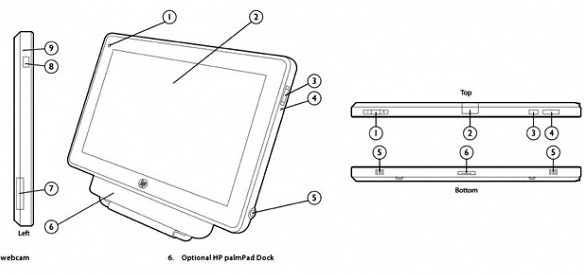
Hewlett Packard’s acquisition of Palm last May for $1.2 billion was largely, if not exclusively, rooted in HP’s interest in Palm’s WebOS. WebOS first debuted on the Palm Pre, a device that many initially thought would give the iPhone a serious challenge. Though Android quickly supplanted Palm as the company with the rocks to actually go tit for tat with Apple, HP saw enough value in WebOS to purchase Palm with plans to use the OS not only in smartphones, but in tablets as well.
Here, former HP CEO Mark Hurd explains the impetus behind HP’s purchase of Palm and their interest in WebOS:
We didn’t buy Palm to be in the smartphone business. And I tell people that, but it doesn’t seem to resonate well. We bought it for the IP. The WebOS is one of the two ground-up pieces of software that is built as a web operating environment…We have tens of millions of HP small form factor web-connected devices…Now imagine that being a web-connected environment where now you can get a common look and feel and a common set of services laid against that environment. That is a very value proposition.
Incidentally, and in the process, Microsoft was dealt a blow in the wake of HP’s purchase as Redmond had high hopes for HP tablets running Windows 7.
In any event, Palm filed a trademark application for “PalmPad” back in July and earlier this week FoxNews, of all sites, posted exclusive images and information about HP’s upcoming tablet.
Here’s what you need to know.
HP will release three different versions of the PalmPad with minor hardware differences among them. Naturally, they’ll all run WebOS.
The consumer version of the PalmPad will run on Sprint’s fast 4G network, but otherwise it has hardware specs nearly identical to Apple’s iPad. There are minor differences, of course: It has a mini HDMI port, for example, while the iPad requires a special dongle for video output. And there are front- and rear-facing cameras (1.3 megapixel and 3 megapixel, respectively), both with LED flashes.
As for dimensions, the PalmPad will be slightly thinner than the current iPad, will weigh-in at 1.25 pounds, will most likely include an iPad-esque 9.7 inch LCD screen, and will also sport a USB 3.0 port.
HP is also planning on releasing a University version of the PalmPad:
The university version sports an 8.9-inch screen and will have access to a university’s internal educational software; it’ll also sport any other specs specifically requested by the institution. Students will start using these in the Fall 2011 semester, HP hopes.





Tue, Dec 28, 2010
News